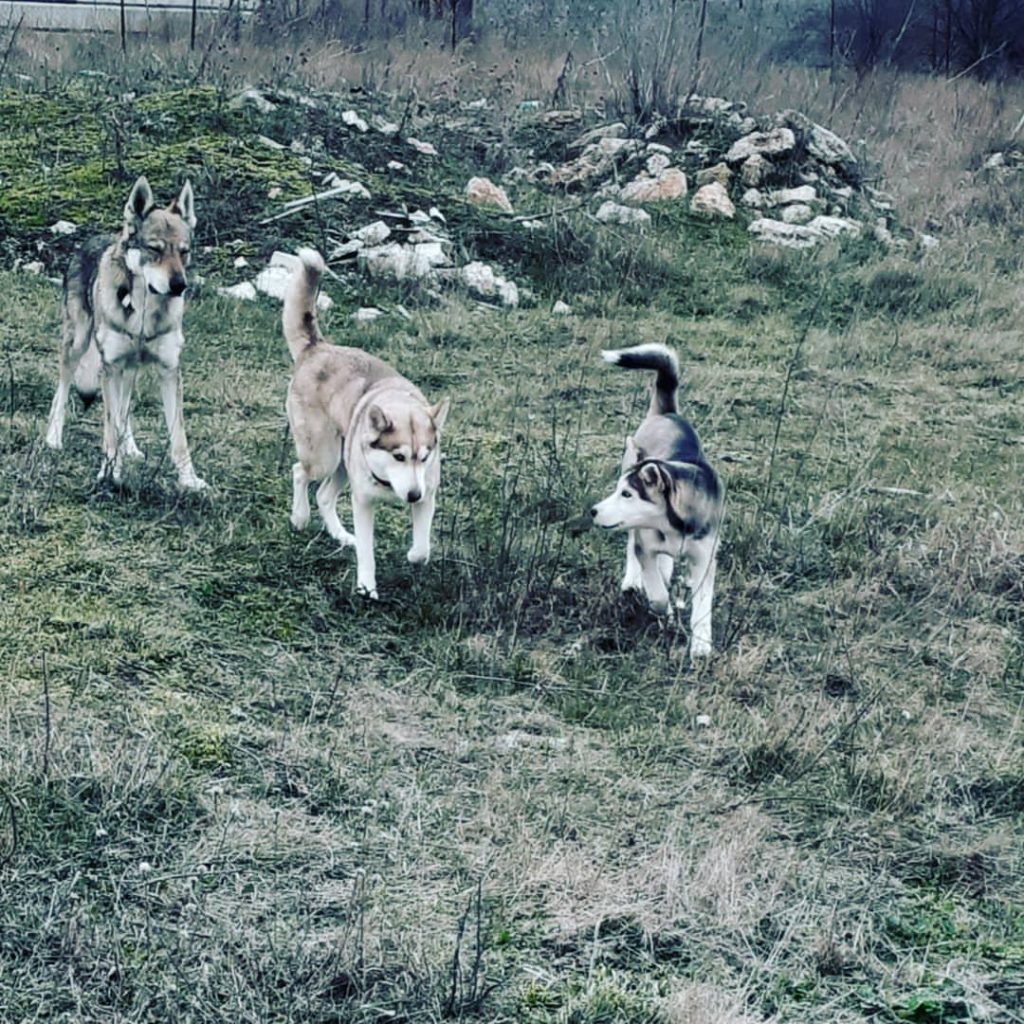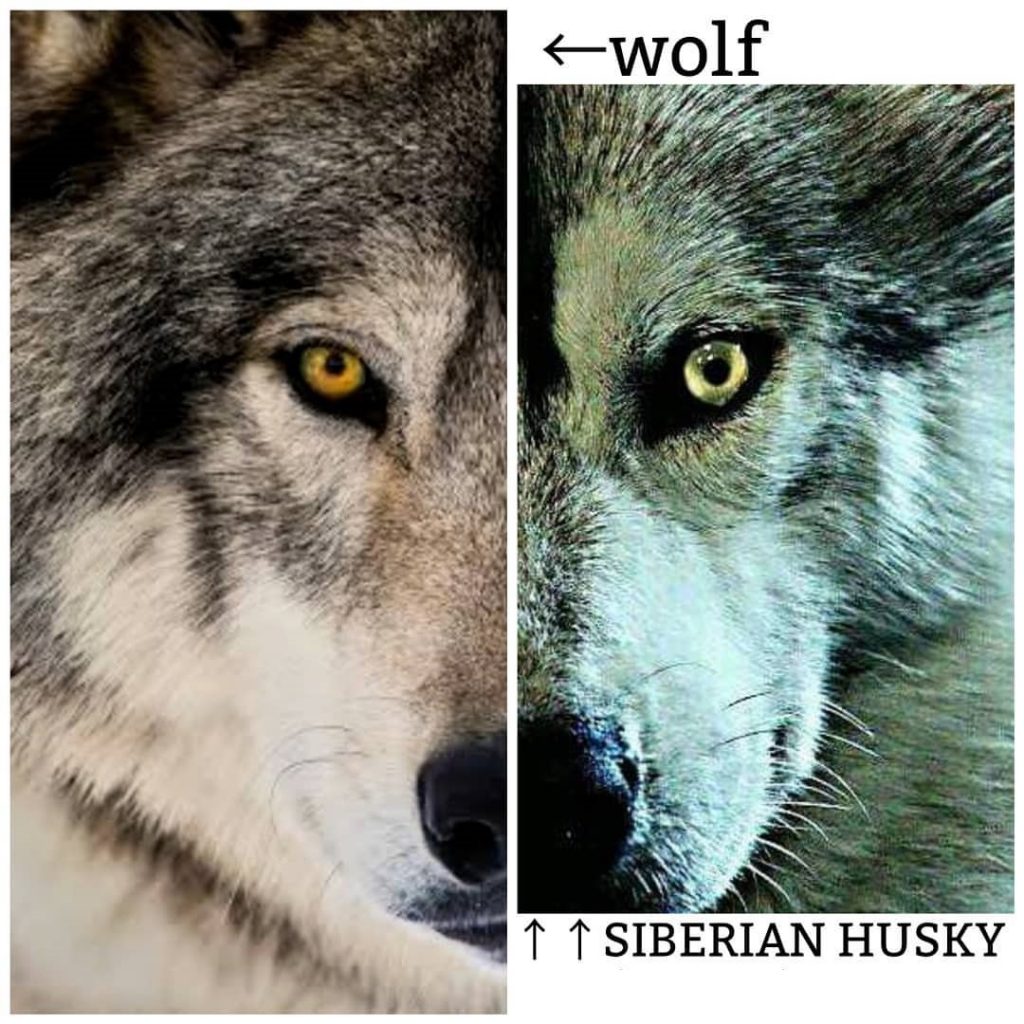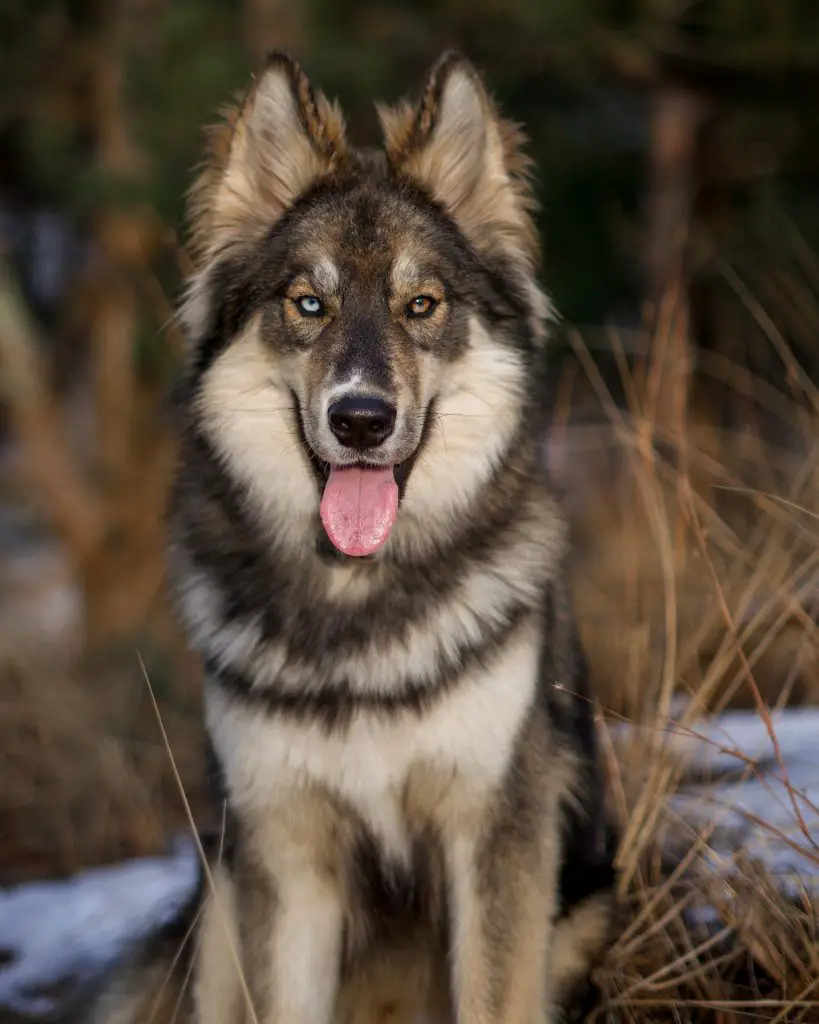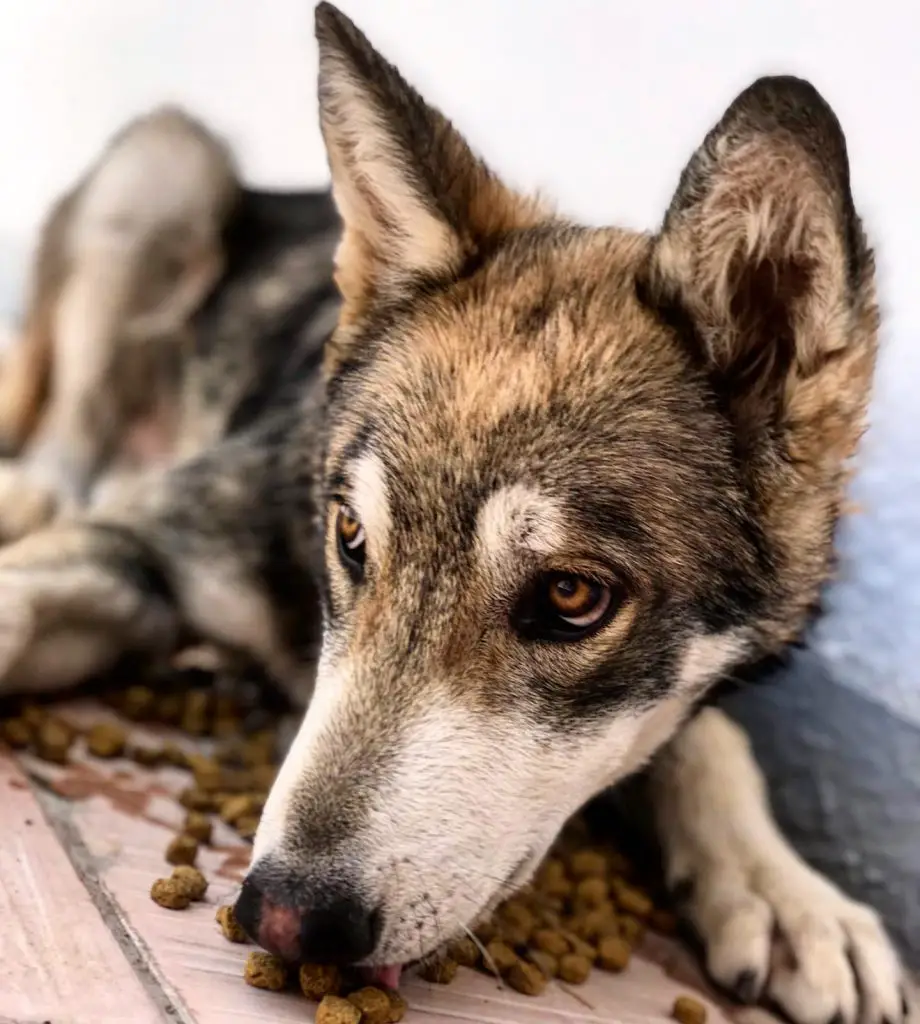Siberian Huskies are very closely related to wolves. They are considered to be the same species. This means that they can interbreed and produce fertile offspring. Huskies are also often used in sledding and dogsledding races, as their wolf ancestors were originally bred for this purpose.

However, These sled dog’s are typically much smaller than wolves, with shorter legs and a more compact body. They also have a different coat type, with longer hair on their head and face, which helps protect them from the cold weather.
You may Like: Are huskies part of the wolf family?
Genetic History of Husky and Wolves.
Huskies are descendants of the original sled dog’s of the Chukchi people, a native group from Siberia. These dogs were bred for their strength, endurance, and ability to pull heavy loads through the snow. They were also prized for their friendly temperament and trainability. Over time, these dog breed’s spread to other parts of the world, including Alaska and Canada.
Wolves are thought to have originated in Asia, and they eventually spread throughout Europe and North America. Like huskies, wolves were originally bred for their strength, endurance, and ability to hunt large prey.
Nowadays, there are fewer wolves in the wild. On the other hand, Huskies are still quite common, especially in colder climates. They continue to be popular pets, and working dog breed’s due to their friendly nature and ability to work in a team.
While huskies are closely related to wolves, there are some important differences between these two animals. Huskies are typically smaller and have shorter legs than wolves. They also have a different coat type, with longer hair on their head and face. This helps protect them from the cold weather. Additionally, huskies are generally considered more friendly and trainable than wolves.
Why Do Huskies Look Like Wolves?
Huskies are often mistaken for wolves due to their similar appearance. However, there are some key differences between these two animals. Huskies typically have shorter legs and a more compact body than wolves. They also have a different coat type, with longer hair on their head and face. This helps protect them from the cold weather.

The same genes are at play.
Researchers have discovered that gray wolves and dogs have the same gene blueprints based on DNA analysis.
Gray canines and wolves share numerous gene types that they can crossbreed successfully. The capacity to successfully interbreed is a sign that dogs and gray wolves can be classified as the same animals. However, there are some noticeable distinctions between them in physical appearance and behavior, suggesting that they are not. The majority of biologists consider wolves and dogs as distinct species. While they share the majority of their genes, if you look at it, each breed of dog has more genetic material with other dogs than with other wolves, and vice versa.
The similarities.
Huskies are similar-shaped heads and feature large double coats for warmth and upright, pointed ears.
They appear very alike that Huskies are frequently used as the wolf in television and film shows.
You may like: How much does a one month old-siberian husky puppy eat?
The difference.
The Huskies look a lot like wolves, but there are various ways to differentiate the two.
Some notable variations There are some notable differences between Huskies and wolves are their eyes, tails, and colors.
- Huskies have curly, fluffy tails. Wolves also have straight, fluffy tails.
- The eyes of huskies can be blue, brown, or a mix of both. However, a gray wolf’s eyes are typically either brown or yellowish-amber color.
- With distinct areas of black, white as well as brown. Huskies are more apparent in their colors than the typical grey and brown mix of wolves.
- A quick wolf vs. Husky size comparison reveals significant differences.
- Wolves are larger as well as heavier than smaller-sized dogs.
As with Huskies, all dog breeds are closely related to gray wolves. Even sleek teacup Poodles, Malteses and the spry Papillons have genetic material in common with wolves.

Are Siberian Huskies more like the wolves?
While they look wolf-like, Huskies aren’t more closely connected to wolves than Poodles and bulldogs. Although they’re all dogs, certain huskies could have crossed with the wolves, resulting in a wolf-human hybrid. It’s a totally different animal than purebred Siberian Husky or its companion, an Alaskan Malamute.
You may like: Are Huskies large or medium dogs?
How do I know the difference between my Husky is one?
In general, the wolf is significantly bigger than the huskies. Although wolves and huskies look like each other, there are slight distinctions. They don’t have curly tails or the white fur-like mask on their faces. They also have smaller, rounder ears, larger heads, bigger chests, and larger legs.

Which Husky appears the most like the Husky?
Alaskan Malamute. Another dog with a strong head appears like a wolf. Alaskan Malamute is as beautiful as the Husky. Alaskans will also know how to maneuver around on a dog sled a bit larger and more fluffy.
You may like: Are huskies the only dogs with blue eyes?
What exactly is a husky wolf hybrid?
Husky Wolf mix is the mix of the wild Wolf breed that is Siberian Husky as well as one of the Arctic Husky breeds. It is crossbred. It is a crossbreed. The name has also known as husky Wolf mix of Wolf dog hybrid, are absolutely gorgeous and extremely smart. Husky Wolf mix (Wolf dog) has a robust build, large ears, a thick coat, and prominent teeth.

Conclusion.
Like other breeds of canines, Siberian Husky dog’s are related to the wolves. However, these distinctive characteristics distinguish Huskies (and other dog breed’s) from wild counterparts. Despite their genetic resemblances, their distinctive temperamental differences force many biologists to see the wolves and dogs as completely distinct species.



